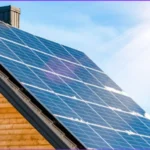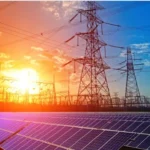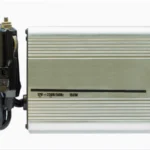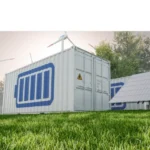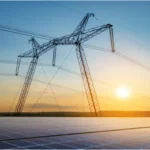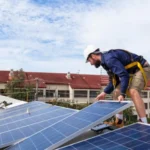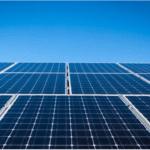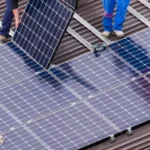Imagine this: The power goes out in your neighborhood. Again. But your lights stay on, your fridge keeps humming, and your electric vehicle is still charging because your home is powered by the sun. That’s the freedom of an off grid solar system. But is going off-grid really practical for the average homeowner or small business owner? Or is it a lifestyle best suited for cabins and remote retreats?
In this guide, we’ll explore the real pros and cons of off grid solar systems, using practical insight, real customer stories, and years of field experience in solar installation and design. Whether you’re considering energy independence for your home or business, this post will help you make a smart and informed decision.

What Is an Off Grid Solar System?
An off grid solar system is a completely self-sufficient power setup that operates without any connection to the traditional utility grid. It typically includes:
- Solar panels to collect sunlight
- A battery bank to store power for nighttime or cloudy days
- A charge controller to regulate battery input
- A smart inverter to convert solar DC power into usable AC electricity
Unlike grid-tied systems that fall back on utility power when needed, off-grid systems must be carefully sized and managed to meet your energy demands at all times.
Why More Homeowners Are Considering Off-Grid Living
In 2024, the U.S. saw a 13 percent increase in weather-related grid outages, according to the Department of Energy. Meanwhile, residential electricity rates rose by 14 percent in some regions. These trends are prompting homeowners to reconsider their reliance on utility companies.
I recently worked with a homeowner near Flagstaff, Arizona, who was tired of annual outages during monsoon season. We helped design a 6.5 kW off-grid solar system paired with 24 kWh of battery storage. “Last summer was the first time in years we didn’t lose power once,” she said. “It’s peace of mind I didn’t realize I needed until I had it.”
Also Vist This Page : Used solar panels
Benefits of an Off Grid Solar System
1. True Energy Independence
With an off-grid system, you’re in full control of your power. No more dealing with unpredictable rate hikes or scheduled blackouts.
2. Environmentally Responsible
You reduce your reliance on fossil fuels by generating and consuming renewable energy directly from the sun.
3. Long-Term Savings
Although the upfront cost can be significant, a well-designed off-grid system can pay for itself in 8 to 12 years, depending on your local energy rates and usage habits.
4. Ideal for Rural or Remote Locations
For properties beyond the reach of the grid, off-grid systems are often the most practical and cost-effective solution.
What to Consider Before Going Off-Grid
Going off-grid isn’t just about installing solar panels and flipping a switch. It requires thoughtful planning and an understanding of your daily energy consumption.
Battery Storage Limitations
You’ll need sufficient battery capacity to get through cloudy days or periods of high usage. For most homes, this means at least 15 to 30 kWh of usable storage, depending on lifestyle and appliance usage.
Upfront Costs
Expect to invest between $25,000 and $60,000 for a complete off-grid system, depending on your energy needs and the brands you choose. While this is higher than a grid-tied system, financing and tax credits can make it more accessible.
Regular Maintenance
Off-grid systems require more user involvement. You’ll need to check your battery status, clean your panels, and sometimes troubleshoot inverter or charge controller issues.

How Dirty Panels Can Drain Your System
One of the most frequently overlooked aspects of solar performance is panel cleanliness. A National Renewable Energy Laboratory (NREL) study showed that soiling loss, or energy loss due to dust and debris on panels, can reduce solar output by up to 20 percent in dry or dusty climates.
I once visited a home near Bakersfield, California, where the homeowner noticed a sudden drop in system performance. The culprit was a thin layer of dust from nearby construction. After a simple rinse and wipe, system output jumped back up by over 18 percent.
Also Vist This Page : Solar uses
Cleaning Tips:
- Rinse with a hose every 1 to 2 months, preferably in the early morning
- Use a soft brush and mild soap if grime builds up
- Avoid pressure washers, which can damage panel surfaces
- Schedule professional cleaning twice a year if you’re in a high-dust region
The Role of Smart Inverters
A smart inverter is what makes your system usable for everyday needs. It converts solar DC power to the AC power your appliances run on, while also balancing loads, managing battery charging, and providing safety disconnects.
Common Troubleshooting Scenario:
One small business in Montana had its off-grid system shut down at noon, despite the strong sunlight. The issue turned out to be heat buildup in the battery room, causing the inverter to trip for safety. We added passive ventilation, and the problem disappeared.
Smart inverters, such as the Sol-Ark 12K or SMA Sunny Island, also offer remote monitoring, allowing you to track your system’s performance from anywhere.
Solar Battery Care: What Every Owner Should Know
Your battery bank is the engine of your off-grid setup. Without good maintenance, even top-tier batteries will degrade faster than expected.
Key Battery Care Tips:
- Avoid full discharges below 20 percent, unless necessary
- Keep lithium-ion batteries between 40 and 80 percent for daily use
- Monitor charge/discharge cycles using your system app or inverter screen
- Ensure batteries are kept within the optimal temperature range (50°F to 80°F)
Tesla Powerwalls, for example, offer around 13.5 kWh of usable energy and are rated for 10 years or more. However, placing one in a hot garage can significantly shorten its lifespan.

Charging Your EV with an Off Grid Solar System
Yes, you can charge your electric vehicle with off-grid solar power, but it requires careful system planning. Let’s break it down.
If your EV averages 30 kWh per 100 miles, and you drive 25 miles a day, that’s 7.5 kWh of additional daily demand. You’ll need a system that can not only cover your home’s energy needs but also generate enough surplus to charge your vehicle.
What to Look for in an EV Charger:
- Chargers with solar integration or load-sensing capabilities
- Smart scheduling to charge during peak solar hours
- Adjustable output to avoid tripping the inverter
One homeowner we worked with in New Mexico installed a 10 kW solar array and upgraded to a 30 kWh battery bank to comfortably charge their EV every night without stress on the system.
Is an Off Grid Solar System Right for You?
Here’s a simple checklist to help you decide:
| Question | Yes | No |
| Do you live in an area with frequent power outages? | ✔ | ❌ |
| Is your home located in a rural or hard-to-reach location? | ✔ | ❌ |
| Can you afford a $25k to $60k upfront investment or secure financing? | ✔ | ❌ |
| Are you open to system maintenance or hiring support when needed? | ✔ | ❌ |
| Do you want full energy independence? | ✔ | ❌ |
If you answered yes to most of the above, an off-grid system may be a smart long-term investment.
Final Thoughts
Choosing an off grid solar system is a big decision. It’s not just about cutting ties with the grid, but about investing in energy security, sustainability, and independence. With the right planning and equipment, your off-grid setup can provide consistent, clean power for years.
That said, it’s not for everyone. System design, battery management, and maintenance require time and attention, or a reliable solar professional to manage those details for you.
If your panels haven’t been cleaned in over 3 months, you could be losing 10 to 20 percent of your energy output. Book a solar inspection today and make sure your system is performing at its full potential.
FAQs
Q: Can I go off-grid with solar panels but no batteries?
A: No. Without batteries, you have no power at night or during extended cloudy periods. Batteries are essential in an off-grid setup.
Q: How big does my off-grid system need to be?
A: It depends on your usage. A typical household using 25 kWh/day will need around a 7 to 10 kW solar array and 20 to 30 kWh of storage capacity.
Q: What happens during multiple cloudy days in a row?
A: If your battery capacity isn’t enough, you may need to reduce usage or rely on a backup generator.
Q: Is it legal to go completely off-grid?
A: In most U.S. states, yes. However, zoning laws and building codes vary, so check with your local municipality.
Q: Can I add a generator to my off-grid system?
A: Absolutely. Many off-grid systems are designed with automatic or manual generator inputs for extended backup.


